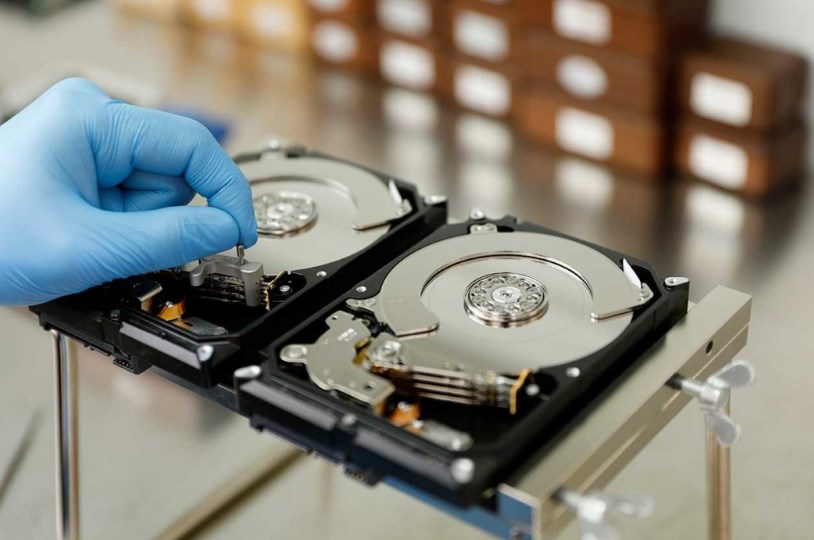In the modern world, data is the backbone of personal and professional life. Whether it’s a simple document, photos from a family vacation, or crucial business data, our lives are often entirely stored in digital formats. Unfortunately, data loss can happen, and when it does, it can feel like the world is crashing down. This is where data recovery services step in.
Data recovery services are specialized services designed to retrieve lost, corrupted, or otherwise inaccessible data from various storage devices. Understanding what these services offer and when to seek them out is crucial for anyone who relies on digital data. In this article, we will explore data recovery services in detail, focusing on what they do, how they work, when you need them, and how to choose the right service provider.
What Are Data Recovery Services?
At its core, data recovery refers to the process of recovering or restoring data that is no longer accessible due to various reasons such as file corruption, hardware failures, or human errors. Data recovery services specialize in retrieving lost files from damaged storage devices. These services cater to a wide range of devices such as hard drives, SSDs, RAID systems, flash drives, and even mobile phones.
There are two main types of data recovery services:
- Logical Recovery: This type of recovery applies when the device’s storage is intact, but files are corrupted or lost due to software malfunctions, accidental deletion, file system corruption, or malware. Here, data recovery experts use specialized software to scan the storage and retrieve the files.
- Physical Recovery: When a storage device suffers physical damage—such as a hard drive crash, water damage, or fire damage—the recovery process becomes more complicated. Physical recovery often requires the service provider to work in a cleanroom environment, where technicians carefully repair the hardware and extract the data.
Data recovery services can vary in terms of complexity, and different providers offer different levels of service depending on the type of failure and the specific needs of the client.
Why Does Data Loss Happen?
Data loss can occur for numerous reasons, and understanding these causes can help individuals and businesses prevent future problems. The most common causes of data loss include:
Human Error
Human error is one of the leading causes of data loss. Simple mistakes such as accidentally deleting files, formatting the wrong drive, or overwriting critical files can result in significant data loss. While it’s easy to understand that a misplaced file or a wrongly clicked button could cause such a disaster, it’s essential to recognize that data is often not permanently gone after such an action.
In most cases, files that have been deleted or overwritten are not immediately removed from the device’s storage. Instead, they become inaccessible and marked for deletion. Until new data overwrites the space, the original data may still be recoverable. This is why it is often advised to stop using the device immediately to maximize the chances of recovery.
Hardware Failures
Hardware failures are another common cause of data loss. Mechanical failures in traditional hard drives (HDDs) are typically caused by issues such as read/write head crashes, motor failure, or issues with the internal circuitry. In Solid-State Drives (SSDs), failures can happen due to wear-and-tear, failed NAND flash memory cells, or electronic issues.
While HDDs can experience physical damage, SSDs are generally more reliable when it comes to failure rates. However, SSDs can still experience data loss, particularly due to issues related to their controllers, firmware failures, or sudden power losses during read/write operations. Recovering data from a damaged hard drive or SSD often requires professional data recovery services.
Corruption or File System Errors

Sometimes, data becomes corrupted due to problems with the file system. A file system can be corrupted by issues like improper shutdowns, power outages, or application crashes. These types of corruption often lead to files becoming inaccessible, and while it might appear that the data is gone, it is still often retrievable using proper data recovery techniques.
Viruses, Malware, and Ransomware
Malware attacks can be incredibly damaging, leading to files being locked, corrupted, or outright destroyed. Ransomware, a type of malware that encrypts data and demands payment for its release, is one of the most notorious forms of attack. In these cases, professional data recovery services can sometimes help decrypt and recover the files without paying the ransom.
Other forms of viruses and malware can corrupt files or make data inaccessible by corrupting the file headers or damaging the disk structure. In such cases, data recovery services use advanced tools to reverse these damages and recover the files.
Natural Disasters and Accidents
While not as common, physical damage caused by accidents or natural disasters can lead to data loss. Flooding, fire, and even electrical surges can cause severe damage to storage devices. In cases where the physical device is destroyed, data recovery services use cleanroom technology to repair and retrieve the data from the damaged device.
In fact, data recovery specialists have specific equipment and expertise that allows them to recover data from devices that have been submerged in water, exposed to fire, or subjected to extreme environmental conditions. These types of recoveries require skilled technicians who understand how to handle damaged components.
How Do Data Recovery Services Work?
Data recovery services utilize a variety of tools, techniques, and procedures to recover lost data. The process varies depending on the cause of the data loss (whether it’s physical damage, logical corruption, or accidental deletion). However, most recovery processes follow these steps:
1. Consultation and Evaluation
The first step in a data recovery service is understanding the issue. The service provider will request details about the device, the symptoms, and the cause of the failure. For example, if a hard drive has failed, the provider will ask if it’s making any unusual noises, whether it’s detected by the computer, or whether it’s showing signs of physical damage.
Based on this initial information, the provider will give an assessment and determine the best course of action. They may offer an initial estimate of the recovery cost, or the evaluation may be free depending on the provider.
2. Diagnostic Evaluation
Once you send in your damaged storage device, the data recovery provider will conduct a detailed evaluation of the device to determine the extent of the damage. If the device has suffered physical damage (e.g., a hard drive crash or water exposure), technicians will work in a cleanroom environment to open the device carefully and assess the damage.
For logical failures, the technician may use diagnostic software to scan the device and determine the severity of the corruption or file system failure. The goal of the diagnostic phase is to gather all the necessary data to begin the recovery process without further risk of data loss.
3. Recovery Process
Once the evaluation is complete, the data recovery team will begin the actual recovery process. Depending on the type of failure, the recovery process can involve several methods:
- Logical Recovery: If the data loss is caused by file system corruption or accidental deletion, recovery experts can often use specialized software to retrieve the lost data. This process involves scanning the disk for any “orphaned” files and rebuilding the file system structure.
- Physical Recovery: In the case of physical damage, technicians may need to open the device and replace faulty components (e.g., the read/write head or motor in a hard drive). After this, the device can be reassembled, and the data extraction process can begin.
- Disk Imaging: When dealing with particularly difficult cases, recovery experts may create a disk image. This image is an exact, bit-for-bit copy of the device’s storage. Once the disk is imaged, the data recovery process is performed on the image, minimizing the risk of further damage to the original device.
4. Recovery and Data Delivery
Once the data recovery process is complete, the recovered files are transferred to a new storage device (such as an external hard drive or a cloud-based storage service). The recovery service provider typically sends a report explaining the recovered data, including any files that were not able to be recovered.
When Should You Use Data Recovery Services?
Data recovery services are invaluable when facing the following situations:
1. Accidental Deletion or Formatting
When files are accidentally deleted or a device is mistakenly formatted, data recovery services can often retrieve the lost files, especially if the space has not been overwritten. Data recovery experts use specialized tools to recover files from formatted drives or accidental deletions.
2. Hardware Failures
If your hard drive starts making unusual sounds, or you notice that your computer or storage device is no longer recognizing your storage medium, this is a clear sign of hardware failure. In such cases, stopping use of the device is essential to prevent further data damage.
3. System Crashes and Corruption
If your computer crashes, or you notice that your file system is corrupted, it’s wise to consult a data recovery service. Often, data recovery experts can repair logical errors in the file system, making the data accessible again.
4. RAID Array Failures
RAID systems are used for high-performance or redundant storage setups. However, if one or more disks fail in the array, it can lead to significant data loss. RAID data recovery services specialize in rebuilding damaged RAID arrays and recovering data from failed RAID configurations.
5. Natural Disasters
If your storage device has suffered physical damage due to fire, water, or any other natural disaster, data recovery services with cleanroom environments can sometimes recover data from severely damaged devices.
Choosing the Right Data Recovery Service
When selecting a data recovery provider, consider the following factors:
1. Reputation and Track Record
Look for a provider with a good reputation and solid experience in recovering data from various types of devices. Check customer reviews and testimonials to get an idea of the provider’s success rate.
2. Cleanroom Certification
For physical damage, choose a provider that has access to a certified cleanroom. These cleanrooms prevent contaminants from damaging sensitive components during the recovery process.
3. Pricing Transparency
Be wary of extremely low prices. Data recovery is a delicate process that requires skilled professionals, and cheap services may not deliver the best results. Choose a provider that is transparent about pricing and provides a detailed cost breakdown before beginning any work.
4. Data Privacy and Security
Ensure that the data recovery provider follows strict data privacy and security practices. Your sensitive information should not be shared or compromised during the recovery process.
Data Recovery Services
Data loss can be a frightening and frustrating experience, but data recovery services provide a vital lifeline for retrieving lost files. Whether the loss occurs due to accidental deletion, hardware failure, malware attacks, or physical damage, professional recovery services can often retrieve critical data. Understanding the types of services available, when to seek help, and how to choose the right provider will ensure that your data is recovered safely and securely.
In today’s digital age, where information is more valuable than ever, knowing when and how to utilize data recovery services is essential for safeguarding your data and ensuring peace of mind.

